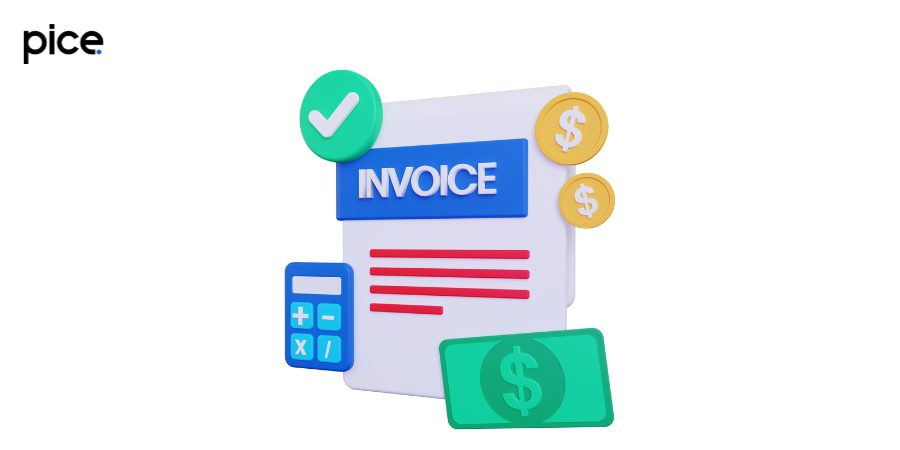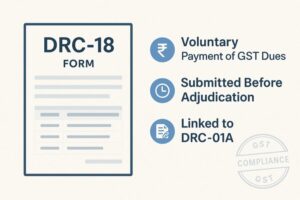Can a GST invoice be raised in foreign currency?
- 23 Aug 24
- 11 mins

Can a GST invoice be raised in foreign currency?
Key Takeaways
- Currency Choice: Invoicing in the importer's currency can provide a competitive edge and convenience for clients.
- E-invoicing Requirement: E-invoicing is mandatory for exports under Indian GST laws for eligible businesses.
- GST on Exports: Exports are zero-rated under GST, meaning no GST is charged to foreign clients.
- Foreign Exchange Risk: Exporters should consider hedging strategies to mitigate the risk of currency fluctuations.
- Compliance: Accurate invoicing and compliance with legal requirements ensure smooth international trade operations.
Exporting goods and services internationally requires thorough documentation to ensure smooth transactions and compliance with legal requirements. One of the most crucial export documents in this process is the export invoice. This article explains everything you need to know about export invoices, their importance, legal considerations, and more.
Meaning of an Export Invoice

An export invoice is a commercial document that the seller (exporter) issues to the buyer (foreign client) in an international trade transaction. It serves as a detailed record and evidence of the sale of goods or services being exported. The export invoice is essential for customs clearance, foreign exchange control, and international payment processing.
Key Elements of an Export Invoice:
- Seller and Buyer Information: Names, addresses, and contact details of both the exporter and the importer.
- Invoice Number and Date: A unique invoice number and the date of issue.
- Description of Goods or Services: A detailed description of the goods or services being exported, including quantity, unit price, and total value.
- Terms of Sale: Incoterms (e.g., FOB, CIF) that define the responsibilities of the buyer and seller in the transaction.
- Payment Terms: Conditions under which the payment will be made, including the currency and due date.
- Shipping Details: Information about the shipment, including the mode of transport, shipping date, and delivery address.
- Taxes and Duties: Any applicable taxes, duties, or charges related to the export.
- Currency and Conversion Rate: The currency in which the transaction is conducted and the exchange rate if applicable.
- Signatures: Signatures of authorized representatives from both the exporter and the importer, if required.
Importance of Raising an Export Invoice
Raising an export invoice is vital for several reasons:
- Legal Requirement: It acts as a legal document required for customs clearance and compliance with international trade laws.
- Financial Record: It helps in maintaining accurate financial records for both the exporter and the importer.
- Payment Facilitation: It specifies the terms of payment, making it easier to track and manage payments.
- Dispute Resolution: In case of any discrepancies or disputes, the export invoice serves as a reference document.
Indian Laws on the Export Invoice
To ensure proper documentation and compliance, export invoices in India are subject to various export laws and regulations. The Central Board of Indirect Taxes and Customs (CBIC) lays down the rules regarding the format, content, and submission of export invoices.
These guidelines ensure that export invoices adhere to Indian laws, facilitating smooth international trade and compliance with GST regulations.
- Type of Export: Clearly classify the type of export, whether it is a physical export of goods or an export of services.
- Zero-Rated Supply: Exports are considered zero-rated supplies under GST, meaning they are subject to a 0% tax rate, allowing exporters to claim a refund of the input tax credit.
- Shipping Address: The export invoice must include the full shipping address where the goods are to be delivered, ensuring clarity in customs documentation.
- Indian Rupees: The invoice should state the transaction amount in Indian Rupees along with the equivalent foreign currency amount and the conversion rate used.
- Domestic Transactions: If there are any associated domestic transactions, they must be clearly separated from the export transactions.
- Taxable Services: Any services provided that are subject to tax must be detailed in the invoice, along with the applicable tax rates.
- Export Invoice Template: Use a standardized export invoice template that includes all necessary details required by Indian law, such as the description of goods, quantity, unit price, total value, and payment terms.
- Export on Payment: The invoice should clearly mention the payment terms, including due dates and the method of payment.
- Export Services: If the export involves services, the nature and scope of the services provided should be clearly described.
- Invoice for Export Must: Ensure the invoice complies with all legal and regulatory requirements for export transactions in India, including necessary signatures and certifications.
Time Limit to Raise an Export Invoice Under Indian Law

Under Indian law, an export invoice must be raised within 30 days from the date of export. This time frame ensures timely documentation and compliance with legal requirements, facilitating smoother international trade processes.
How are packing and shipping dealt with an export invoice?
Packing and shipping details are crucial components of an export invoice. They include:
- Packing List: A detailed list of the contents of each package, ensuring accurate customs clearance and smooth logistics management.
- Shipping Instructions: Specific instructions for handling, transportation, and delivery, including any special requirements to ensure the safe and timely arrival of goods.
- Freight Charges: Clearly stated costs associated with shipping and handling, detailing the financial responsibility of each party involved.
Use of Currency in an Export Invoice
The use of currency in an export invoice is a critical aspect of cross-border trade, ensuring clarity and compliance with both governmental authorities and foreign trade regulations. Key considerations include:
- Currency Specification: Clearly state the currency in which the transaction is conducted, whether it's Indian Rupees (INR) or a foreign currency. This is essential for GST-registered businesses and Indian exporters to accurately calculate taxes and comply with customs requirements.
- Conversion Rate: Include the exchange rate used for converting the transaction amount to the foreign currency. This helps in meeting critical GST requirements and provides transparency for both parties involved in the transaction.
- Additional Details: Provide complete details, such as the total value in both the foreign currency and INR, ensuring that all financial implications are clear for both the Indian business and the foreign company.
- Customs Requirements: Ensure that the invoice meets all customs requirements, including the correct currency and conversion rate, to facilitate smooth customs clearance.
- Governmental Authorities: Ensure compliance with legal provisions and foreign trade regulations set by governmental authorities, which may require specific currency details on export invoices.
- Sole Consideration: Mention the sole consideration for the transaction, avoiding any ambiguity about the payment terms and currency used.
- Cost Considerations: Clearly outline any cost considerations related to currency exchange and transaction fees, which may impact the overall cost of the provision of goods or services.
Costs and Fees to Consider with International Transactions

- Volume of Work and Related Costs: The complexity and volume of work involved in exporting can significantly influence costs. For large shipments, the per-unit cost tends to decrease due to economies of scale. However, smaller volumes might result in higher per-unit costs as fixed costs are spread over fewer items.
- Client's Location: The geographic location of the client plays a crucial role in determining shipping costs, delivery times, and the choice of currency for the transaction. Remote or difficult-to-reach destinations may incur higher shipping charges and longer delivery times, which can affect overall costs and logistics.
- Transaction Costs: International transactions often involve various fees, including bank fees for processing payments, currency conversion charges, and other administrative costs. These costs can add up and should be factored into the pricing strategy to ensure profitability.
- Tax Implications of Charging in Different Currencies: Charging in different currencies can lead to varying tax implications. It's essential to understand the tax regulations in both the exporter's and the client's countries to ensure compliance and optimize tax efficiency. This may involve seeking advice from tax professionals to navigate complex international tax laws.
- Currency Exchange Rate Risk: Exchange rate fluctuations may have an impact on the exporter's final payment. To mitigate this risk, exporters can employ hedging strategies, such as forward contracts or options, to lock in exchange rates and protect against adverse currency movements.
- Competitive Positioning in Foreign Markets: Selecting the right currency for transactions can provide a competitive edge by aligning with the preferences of foreign customers and reducing transaction barriers. This can make the pricing more attractive and the purchasing process smoother for international clients.
- Accounting and Reporting Considerations: Accurate accounting and reporting of transactions in different currencies are essential for maintaining financial transparency and compliance. This includes keeping detailed records of exchange rates used and any associated gains or losses due to currency fluctuations.
- Legal and Regulatory Compliance: Adhering to legal and regulatory requirements for currency use in export invoices is crucial to avoid penalties and ensure smooth operations. This involves understanding and complying with international trade laws, foreign exchange regulations, and other relevant legal provisions.
- Customer Preferences: Understanding and accommodating customer preferences for currency can enhance customer satisfaction and foster long-term business relationships. Offering flexibility in currency choice can make transactions more convenient for clients and demonstrate a customer-centric approach.
Even though international money transfers online may incur an 18% transaction fee for certain products, this fee does not translate to a separate GST charge on the remittance itself.
Payment Methods for International Transactions

Various payment methods are available for international transactions, each with its benefits and considerations.
Bank Transfers
- Bank transfers are a secure and widely used method for international payments. They involve transferring funds from one bank account to another, often through intermediary banks.
Credit Cards
- Credit cards offer a convenient payment method, especially for smaller transactions. They provide quick processing but may incur higher transaction fees.
Online Payment Platforms
- Platforms like Pice, PayPal, Stripe, and others offer ease of use and quick transaction processing, making them popular choices for international payments.
Letters of Credit
- Letters of credit are guarantees from banks that the seller will receive payment once the terms of the agreement are met. They provide security for both parties but can be complex and costly.
SWIFT in International Money Transfers
The Society for Worldwide Interbank Financial Telecommunication (SWIFT) network facilitates secure and standardized international money transfers. It connects thousands of financial institutions globally, ensuring reliable and efficient cross-border payments.
Foreign Inward Remittance: FIRA and FIRC
Foreign Inward Remittance Certificate (FIRC) and Foreign Inward Remittance Advice (FIRA) are documents issued by banks in India, confirming the receipt of foreign currency. They are essential for regulatory compliance and claiming export incentives.
The Importance of Letter of Undertaking (LUT) in International Transactions
A Letter of Undertaking (LUT) allows exporters to make exports without paying IGST, provided certain conditions are met. It simplifies the process and enhances cash flow for exporters.
Can an Invoice Be Prepared Using Any Currency in an Export Business?
Yes, the exporter and the importer can mutually agree on any currency to use when preparing an invoice. However, it is crucial to consider the implications of currency choice, including exchange rates, transaction costs, and legal requirements.
Conclusion
Export invoices are vital documents in international trade, ensuring clarity, compliance, and efficient transaction processing. Understanding their components, legal requirements, and the impact of currency choice can significantly enhance the export process.
By paying attention to details and choosing the right payment methods, exporters can navigate the complexities of international trade smoothly and effectively.
💡If you want to pay your GST with a credit card, then download Pice Business Payment App. Pice is the one stop app for paying all your business expenses.
 By
By 

















